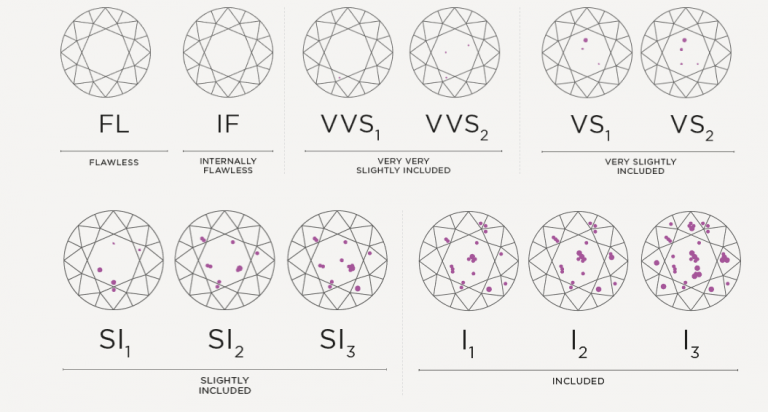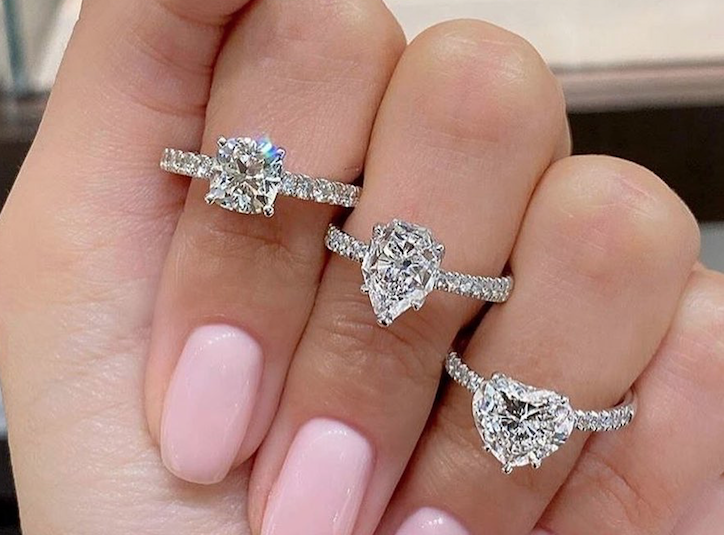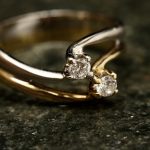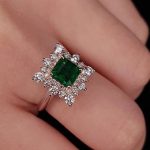If you’re recently, or about to get engaged, and choosing your own ring, it’s important to know what to look for. Of course, not all engagement or wedding rings have diamonds. You can choose any stone, crystal or gem you want!
If, however, if you’re leaning towards a girl’s best friend, we share some advice from experts on how to make sure your diamond is of good quality, suits your style and band, and is the best value for its price.
The Gemological Institute of America (GIA) has created a universally used system called the Four Cs of Diamond Quality. These categories are your go-to method for assessing your sparkly rock.
Cut
The shape of your diamond is a personal choice, and refers to the way a stone is hand- chiselled to reveal its proportions, symmetry and polish. In fact, the cut is the only way a jeweller can make a diamond unique and stand out. Cutting diamonds is a great skill, and the quality of the cut determines how the stone’s facets will interact with light and ultimately how much it sparkles. Choose a cut that catches your eye. Trends come and go, so don’t just go with the current most fashionable shape. Go for the one that shimmers its way into your heart.
Here are the most common options:

View this post on Instagram
Clarity
All diamonds bear ‘birthmarks’ – small imperfections inside the diamond, called inclusions. The number of these imperfections determine a diamond’s clarity and more flaws mean a less brilliant stone.
The GIA’s 11 point diamond clarity scale ranges from flawless to heavily included. Stones that are flawless or very slightly included are virtually perfect to the naked eye. However, diamonds with inclusions can be just as radiant, beautiful and perfect for you.
Here’s a spectrum on which you can find the clarity of your diamond:

Colour
Diamonds naturally occur in various different colours. However, in the traditional white diamond, white is highly sought after. The presence of other hues, especially yellow, lowers a white diamond’s value.
The GIA grades white diamonds on a scale of D (colourless) to Z (darkest). All D-Z diamonds are considered white, even though they contain varying degrees of colour, while coloured diamonds are graded on a separate scale. Do bear in mind that the colour of the band can also influence the stone’s appearance. If you’re going for the ‘pure’ look, choose the whitest rock you can find (budget allowing). However, don’t shy away from yellow diamonds, as they posses a beauty of their own.
Take a look at the scale for colour grading:

Carat
Most people think of carat as a stone’s size, but it actually refers to weight, with a metric carat equalling 0.2 grams. Diamonds are measured meticulously using 100 ‘points’. Very large stones are incredibly rare, as fewer than one in a million mined rough stones are large enough to produce a finished 1 carat diamond. As the weight of a stone increases, its value therefore increases exponentially, with a 3 carat stone potentially costing 9 times as much as a 1 carat equal stone.
Take a look here:

When going ring shopping, bear in mind that no one factor can determine a diamond’s value and that more expensive isn’t necessarily more you.
Source: Shiny Rock Polished
Image: Instagram/Weddingplannermontreal




















